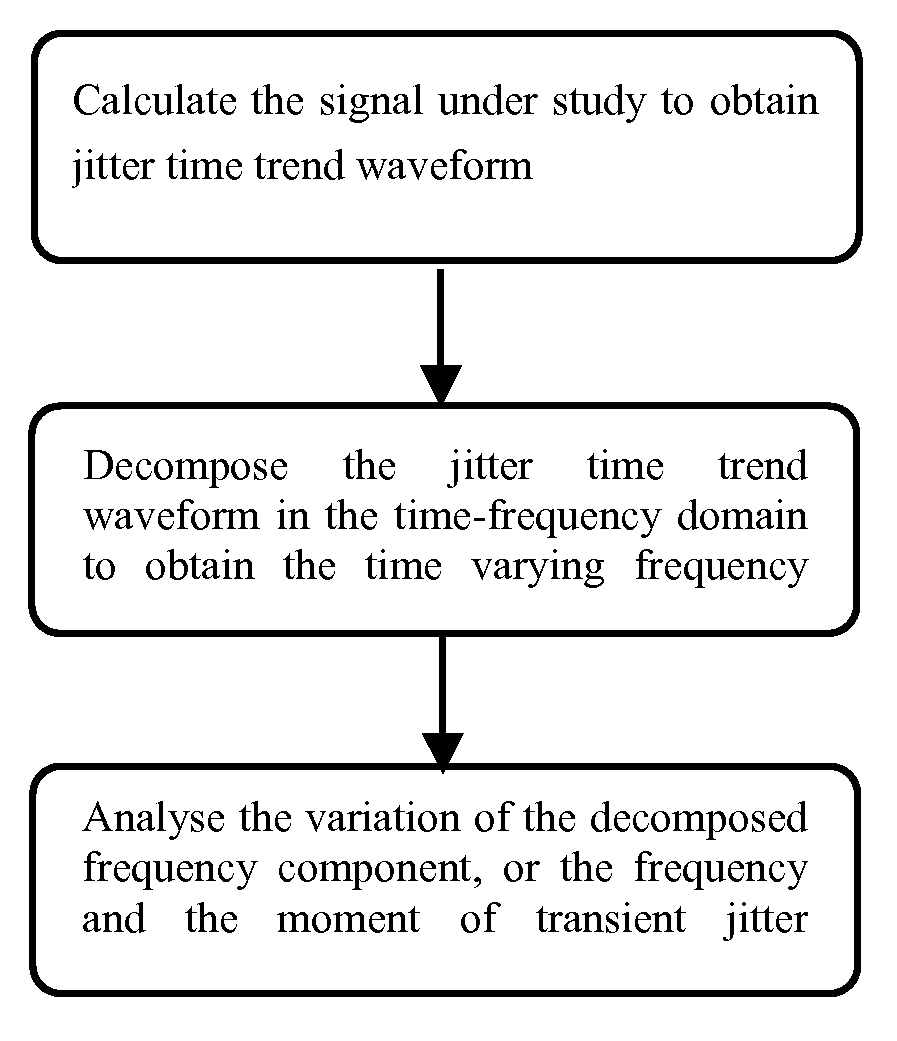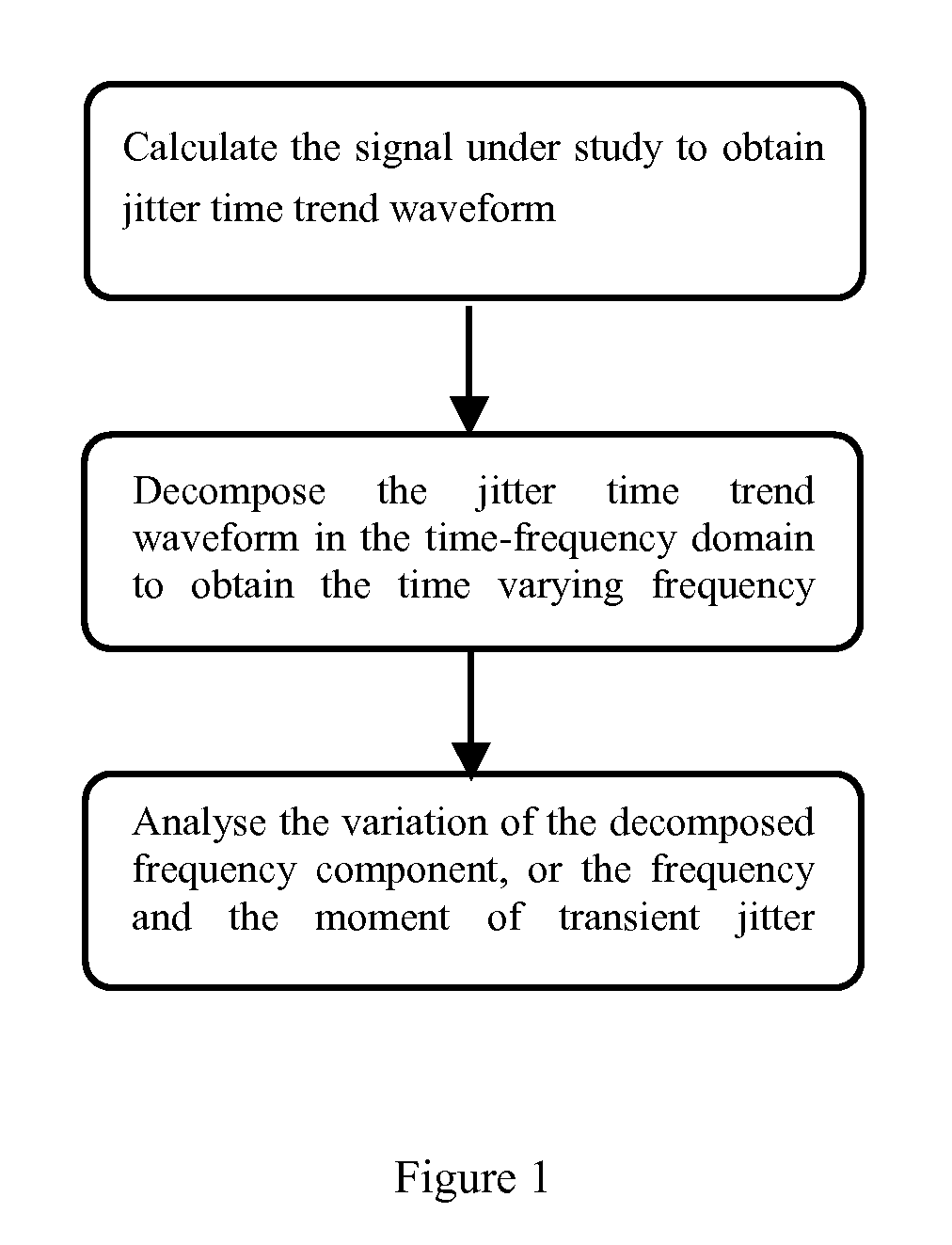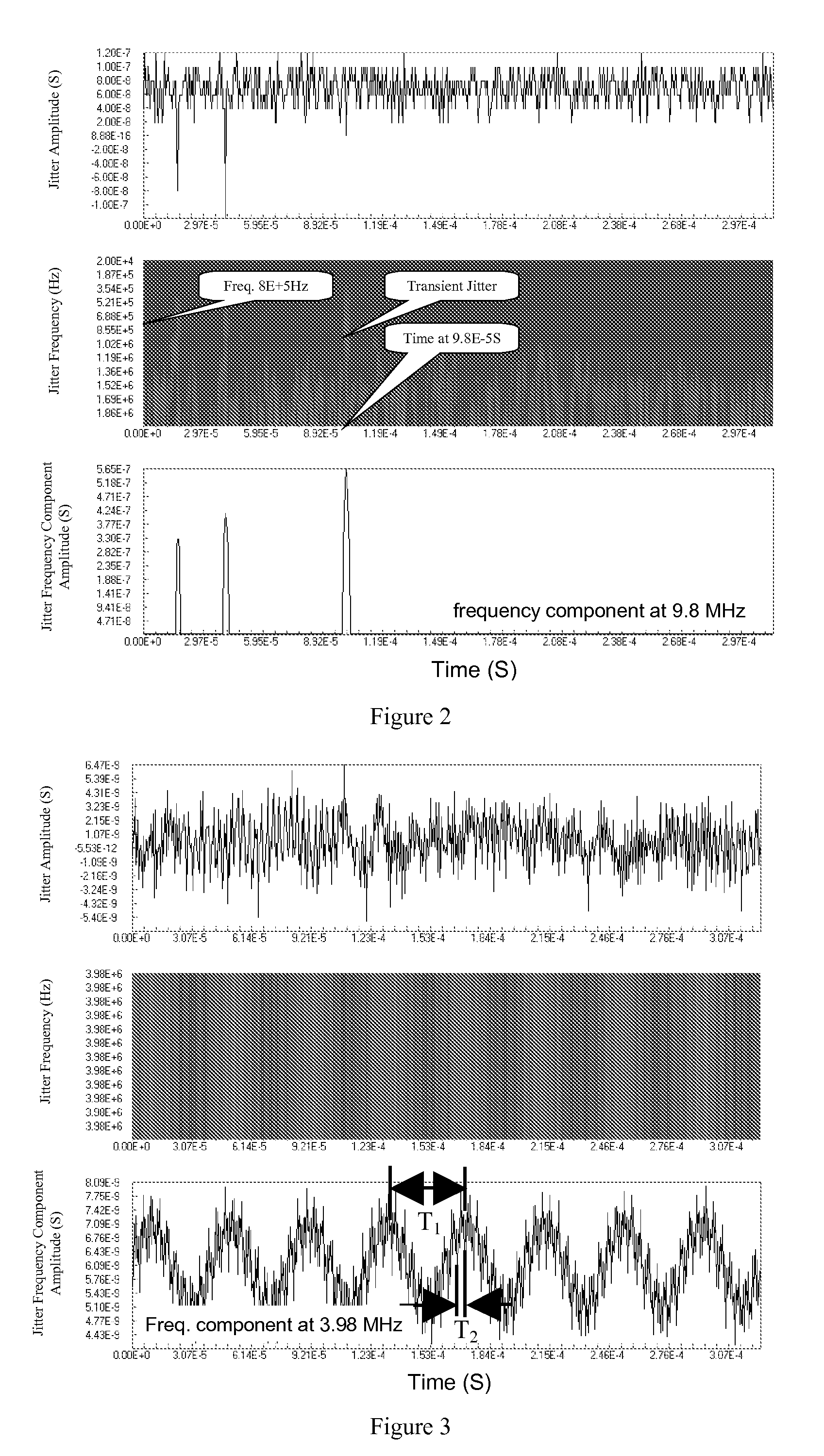Method for signal jitter detections based on time-frequency domain analysis
a time-frequency domain and signal jitter technology, applied in the direction of transmission monitoring, line-transmission details, digital transmission, etc., can solve the problems of transient jitter frequency and moment detection that cannot be realized by the prior art and the measurement of jitter frequency variation and transient jitter frequency and moment detection
- Summary
- Abstract
- Description
- Claims
- Application Information
AI Technical Summary
Benefits of technology
Problems solved by technology
Method used
Image
Examples
embodiment 1
[0027]Best mode This embodiment extracts the transient jitter in time-frequency domain The experimental signal is the serial pulse data acquired from an AFS 1016 Fast Ethernet Switch by an oscilloscope. FIG. 1 shows the flow chart of the process of the invention method comprising:[0028](1) Calculate the signal to obtain jitter time trend waveform. Various jitter calculation algorithms that illustrate the result in the format of time trend can be used. In this Best Mode Embodiment, the signal from the Switch is acquired by a digital oscilloscope and PJ of acquired signal is calculated according to (2), resulting at waveform illustrated at FIG. 2 top frame. It is well-know to the designer with ordinary skill in the pertinent art, there are many oscilloscope products integrated the jitter analysis function and can be used to acquire data from the signal and calculate the jitter time trend waveform.[0029](2) Decompose the PJ time trend waveform into time-frequency domain. Signal transf...
embodiment 2
[0035]Best mode This embodiment extracts the jitter frequency time trend variation of the signal. Again, following the procedure illustrated in FIG. 1:
[0036](1) Calculate the signal under study into the jitter time trend waveform. The experimental signal is the serial pulse data that is acquired from an AFS 1016 Fast Ethernet Switch, recorded and calculated the Time Interval Error (TIE) according to (3) by an oscilloscope, resulting at the signal TIE trend waveform illustrated in the top frame of FIG. 3.
[0037](2) The signal TIE time trend waveform is decomposed into the time-frequency domain. In this embodiment 2, the Short-Term Fourier Transform (STFT) is used:
Sƒ(u,Ω))=∫−∞+∞ƒ(t)g(t−u)e−taxdt (6)
where[0038]g(t−u) is the window function;[0039]U is the shifting factor;[0040]ƒ(t) is the time domain signal being transformed; and[0041]Sƒ(u,Ω)) is the STFT coefficient after transforming.
[0042]It is well-know for the designer with ordinary skill in the pertinent art that STFT transforms ...
PUM
 Login to View More
Login to View More Abstract
Description
Claims
Application Information
 Login to View More
Login to View More - R&D
- Intellectual Property
- Life Sciences
- Materials
- Tech Scout
- Unparalleled Data Quality
- Higher Quality Content
- 60% Fewer Hallucinations
Browse by: Latest US Patents, China's latest patents, Technical Efficacy Thesaurus, Application Domain, Technology Topic, Popular Technical Reports.
© 2025 PatSnap. All rights reserved.Legal|Privacy policy|Modern Slavery Act Transparency Statement|Sitemap|About US| Contact US: help@patsnap.com



